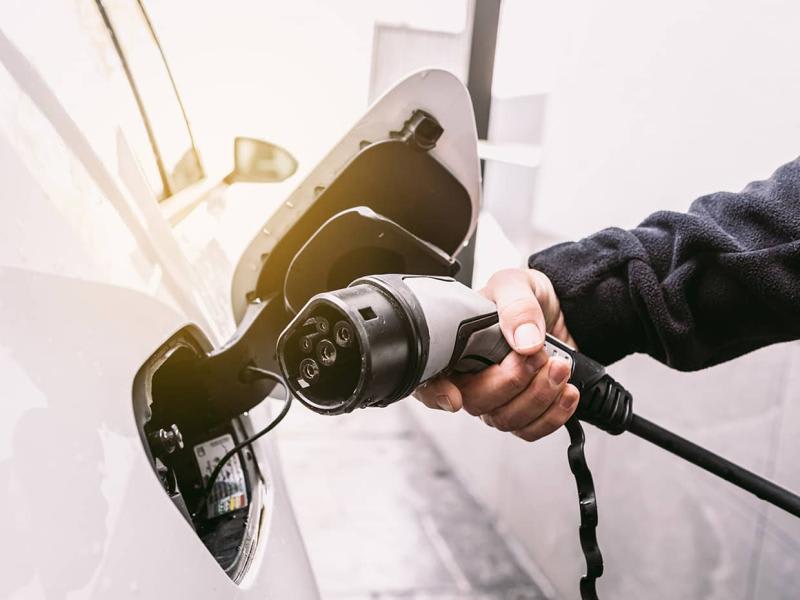Key takeaways
Author
It’s safe to say that, after the challenges of recent years, such as manufacturing shutdowns and global supply chain bottle necks as a result of COVID-19, as well as increasing pressures to reduce environmental impacts, automakers are ready to be excited for the future again. While many of these issues continue to linger, the electric vehicle (EV) revolution is at the epicentre of this excitement, and stands to benefit many - drivers, suppliers, Original Equipment Manufacturers (OEMs), and governments.
So, what will this future look like? What kinds of innovations will we see once EV becomes a household phenomenon around the world? There is a significant amount of speculation, but the reality is this: the automotive industry employs some of the brightest, most creative minds in the fields of design, engineering, electronics, and manufacturing, so the possibilities are infinite. Here are a few of my thoughts on what automotive innovation may look like in the coming years.
Making EV adoption more widespread
We have all heard the chatter about range anxiety, but cost is still the key factor in EVs achieving parity with internal combustion vehicles. Up to this point, the massive push to EV transformation has largely been driven by governments, regulators, and venture capitalists. While they may provide important subsidies, incentives, and capital to spur the industry, that model is not sustainable into perpetuity. Sooner or later, EVs will have to be compatible with the average household income in order for adoption to truly take off. Automakers and suppliers are going to have to find ways to make money on these vehicles throughout the supply chain, and at the same time, find a way to produce these vehicles at a rate that makes them affordable to the average consumer.
Standardisation is another major barrier to adoption, especially considering the aforementioned cost of entry for the average driver. Nobody wants to buy an expensive EV that will be obsolete in two or three years. The EU Parliament recently approved a law requiring universal charging cables for electronics in an effort to reduce e-waste. I am sure the automotive industry was paying close attention to this development, which may be why we have just seen General Motors and a handful of OEMs announce that they are adopting Tesla Superchargers. Creating a more common charging infrastructure for vehicles will certainly help allay consumer concerns.
Building a charging ecosystem
The development of EV charging infrastructure is one of the biggest challenges automakers will face. It is much more complex than just replacing fuel pumps with charging stations and calling it a day. Modern technology evolves at a blistering pace, which means EV tech may look drastically different ten years down the road. Unfortunately, we are collectively stuck in the ‘horseless carriage’ mentality: cars go to a refuelling station, plug in a nozzle, and fill up the tanks. When it comes to charging EV, we will have to break out of that legacy mindset and explore new possibilities.
That is partly because EV charging offers as many opportunities as it does obstacles, and that has innovators coming out of the woodwork. The concept of home charging is dominating the conversation, and many entrepreneurs are already developing technology solutions that refuel your car’s battery while you sleep. If you subscribe to the circular economy philosophy, it doesn’t make sense that your car sits in a garage for hours on end doing nothing, so it makes sense to put that time to use.
But what about drivers who live in cities and park on the street because they do not have a garage? They will need charging stations too, and so far one of the most interesting ideas making the rounds is how the real estate industry is set to capitalise on the EV trend. Petrol-powered vehicles take relatively little time to fill up, but EVs can take up to 6 – 8 hours, or even more, depending on the car’s battery and the charger. If we consider the old petrol-and-convenience-store model, EV refuelling presents more opportunities for increased foot traffic. What better way to literally increase traffic to your store than by being a charging destination?
Are power grids ready for EVs?
Beyond consumer acceptance of EVs lies another challenge: energy consumption. Power grids all over the world are already struggling to handle their current demand, and with temperatures rising during the hotter months, some are even failing outright. The impact of widespread EV adoption on the power grid is already being examined, especially if home charging becomes the norm. With many people choosing to charge their EV overnight, that will create a spike in usage during that time.
One concept that is gaining traction comes from a study conducted by researchers at the Massachusetts Institute of Technology (MIT). It revolves around the idea of strategically placing charging stations to drive refuelling behaviours that mitigate impact on the grid, while also reducing the need for expensive technology investment. While consumer adoption may be the issue that gets the most press, the reality is that charging infrastructure has a significant way to go in order for EV to fully take off.
A collective drive to succeed
If EVs represent the next step in human mobility, collaboration is key. We cannot get there by working in siloes or attempting to innovate in a vacuum. Whether it is range anxiety, insufficient charging infrastructure, grid impact, or total supply chain transformation, the EV industry will require problem-solving on a massive scale; so, the more heads we can put together, the better. Convergence is needed in order for us to focus on the right solutions. Otherwise, this transition could take forever.
The good news is that we’re already seeing a shift away from how things have always been done. It has been a while since we have seen all the major players in one industry rally around a singular ambition in the way the automotive industry is rallying around EVs. There are additional parties at play, including governments, investors, energy providers, and entrepreneurs. Ultimately, there are numerous benefits that can result from a successful transition to EVs.
The automotive industry, and mobility as a whole, is at an inflection point as a result of the potential for a significant transition to full electrification. While it's not every day one has the opportunity to watch the birth of an industry, it's even more rare that one can see it reborn. Over the course of the next couple of decades, we will all have a front-row seat.
For additional insights, you can also watch our recent webinar, where experts from RSM's Global Network, along with guest speaker Tessie Hartjes, Investor Relations at Lightyear, creators of the first long-range solar electric car, came together to address some key challenges.





